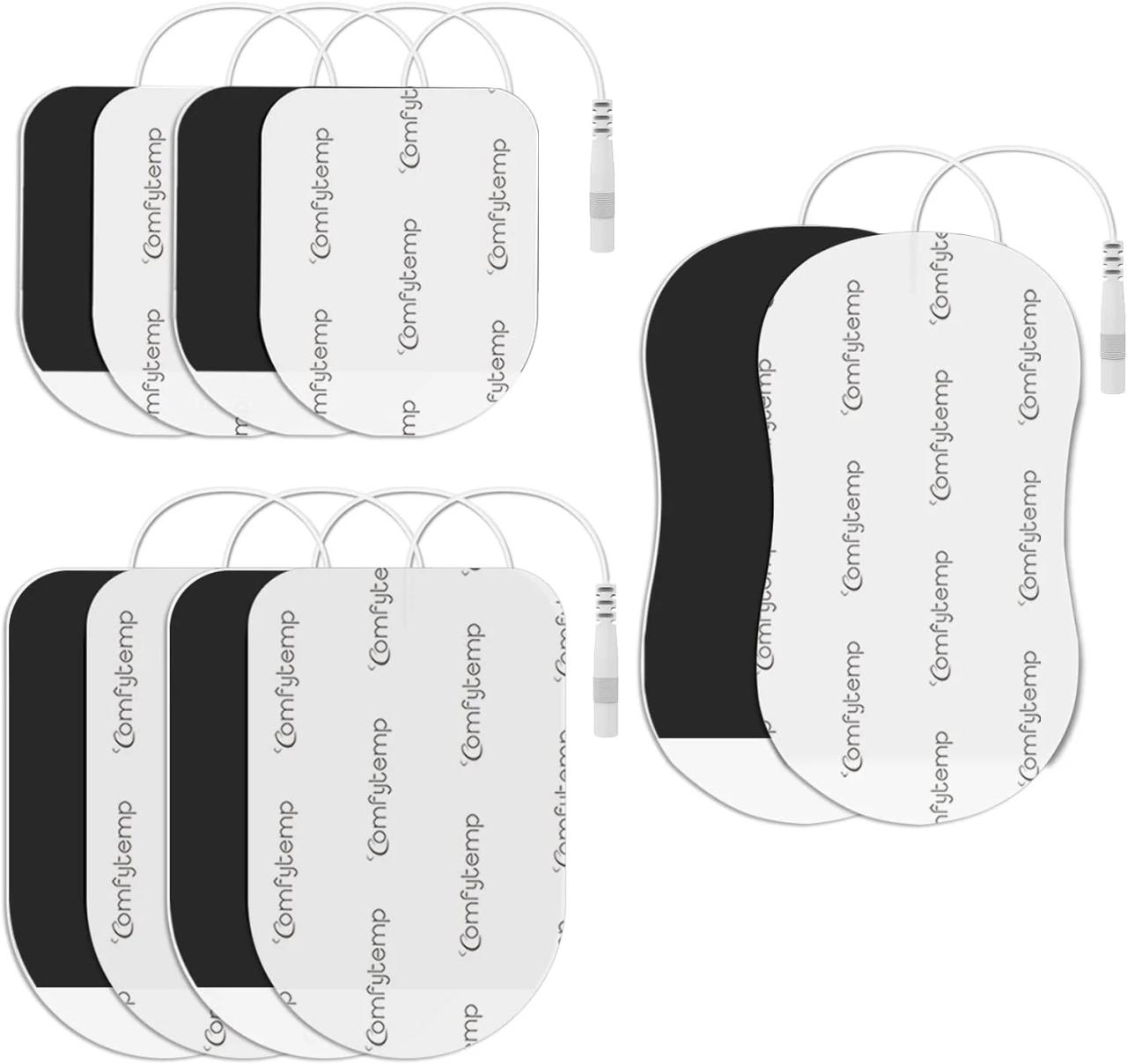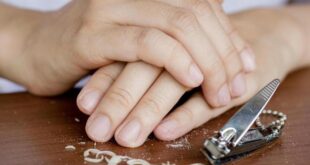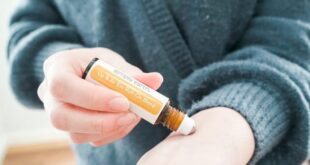How to clean TENS pads? It’s crucial for optimal TENS unit performance and your overall well-being. Proper cleaning keeps your pads hygienic and extends their lifespan, ensuring consistent therapy sessions. Dirty pads can harbor bacteria and compromise the effectiveness of your treatments. This guide breaks down the process, from essential supplies to advanced troubleshooting, to keep your TENS pads in tip-top shape.
This comprehensive guide provides a step-by-step process for maintaining your TENS pads, covering everything from basic cleaning techniques to dealing with stubborn stains. We’ll also discuss various types of TENS pads and their specific cleaning needs. Get ready to tackle those dirty pads like a pro!
Introduction to Cleaning Tenacious Pads
Tenacious pads are a diverse group of cleaning tools designed for tackling tough grime and stubborn stains. They’re commonly used in various settings, from home maintenance to industrial applications. Their effectiveness stems from specialized materials and often abrasive surfaces that work to physically remove contaminants. Understanding their construction and proper cleaning methods is crucial for maximizing their lifespan and performance.These pads, with their various designs and materials, excel at removing tough residues.
Their ability to effectively clean surfaces, from kitchen countertops to factory machinery, makes them invaluable tools. Choosing the right tenacious pad for a specific job is important, as some are better suited for abrasive tasks than others.
Materials Used in Tenacious Pads
Tenacious pads are made from a range of materials, each contributing to their unique characteristics. Common materials include various types of synthetic fibers, such as nylon, polyester, and microfiber. These materials provide the scrubbing power and the ability to hold cleaning agents, which can be crucial in removing stubborn stains. Some tenacious pads incorporate abrasive elements, such as silica, alumina, or ceramic particles, for increased cleaning power.
The composition of the pad directly impacts its effectiveness and longevity.
Types of Tenacious Pads
Different types of tenacious pads cater to various cleaning needs. One category is abrasive pads, which are specifically designed for heavy-duty cleaning tasks. These pads typically feature rough surfaces, often made with granular materials like silica, for effective removal of hardened deposits. Abrasive pads are commonly used for cleaning painted surfaces, removing rust, or removing tough grease build-up.Another category includes polishing pads.
These pads, often made from softer materials, are used to refine surfaces and restore their shine. They are typically used on metal surfaces to create a smooth, glossy finish. These pads are commonly found in auto detailing and metalworking applications. These softer pads are less abrasive than their counterparts.
Importance of Proper Cleaning Methods
Proper cleaning methods are essential to maintain the effectiveness and longevity of tenacious pads. Improper handling or cleaning can damage the pad’s structure and reduce its cleaning power. Overuse or harsh cleaning agents can wear down the pad, reducing its effectiveness over time. Following manufacturer recommendations for cleaning and storage is essential to maximize the pad’s lifespan.
Proper cleaning also ensures the pad can continue to effectively remove dirt and grime.
Cleaning and Storage Recommendations
Regular cleaning and proper storage practices will help maintain the effectiveness of tenacious pads. This includes thoroughly rinsing the pad after each use to remove loosened debris and prevent build-up. Some pads are designed to be machine-washable, while others may require hand-washing. Carefully storing the pads in a dry environment, away from moisture and direct sunlight, can also help maintain their condition and prevent premature deterioration.
These practices prolong their usability.
Essential Cleaning Supplies
Proper cleaning of tenacious pads is crucial for their longevity and effectiveness. Using the right tools and solutions is vital for a thorough and safe cleaning process. Choosing the right supplies can prevent damage to the pads and ensure a hygienic cleaning environment.
Cleaning Solution Selection
A suitable cleaning solution is essential for dissolving dirt and grime effectively. The type and concentration of the solution depend on the material of the tenacious pad. For example, a solution designed for rubber pads may differ from one used for fabric or plastic pads.
| Item | Description | Purpose |
|---|---|---|
| Cleaning Solution | A mild, non-abrasive cleaner, specifically formulated for medical or laboratory equipment. A diluted solution of isopropyl alcohol (70% concentration) is often suitable for many tenacious pads. | Dissolving dirt and grime without harming the pad’s material. |
| Soft Cloth/Sponge | A microfiber cloth or a soft, non-abrasive sponge. Avoid using rough or scratchy materials. | Gentle cleaning and wiping, preventing scratching or damage to the pad’s surface. |
| Protective Gloves | Nitrile or latex gloves are recommended to protect hands from chemicals and prevent skin irritation. | Safety and preventing skin irritation from cleaning solutions. |
Alternative Cleaning Solutions, How to clean tens pads
Several alternative cleaning solutions can be used, each with its own advantages and disadvantages.
- White Vinegar: A natural cleaning agent, effective for some types of tenacious pads. It can be diluted with water and used as a cleaning solution. However, it may not be suitable for all materials and can leave a lingering odor.
- Baking Soda Paste: A mild abrasive that can be mixed with water to form a paste for scrubbing stubborn stains. This option is best for removing surface dirt and can be effective for some tenacious pads, but may not be suitable for all materials.
- Commercial Disinfectants: Some commercial disinfectants are effective in cleaning and disinfecting. However, it is crucial to check the compatibility of the disinfectant with the material of the tenacious pad. Overuse or inappropriate concentration may harm the pad. Always follow the manufacturer’s instructions.
Importance of Solution Selection
Using the correct cleaning solution is crucial for effective and safe cleaning. Different tenacious pads are made from various materials, each reacting differently to different cleaning solutions. Using an inappropriate solution can damage the pad’s surface or compromise its performance. For example, using a harsh abrasive cleaner on a delicate rubber pad could cause permanent damage, affecting its ability to adhere to surfaces.
Step-by-Step Cleaning Procedures
Keeping tenacious pads clean is crucial for their longevity and effectiveness. Proper cleaning methods prevent premature wear and tear, ensuring they perform optimally. This section details the essential steps for cleaning various types of tenacious pads, from abrasive to polishing.Thorough cleaning is vital to maintain the integrity of the pad and its intended function. A clean pad works more efficiently and safely, reducing the risk of damage to the surface being cleaned.
General Cleaning Procedure
A consistent cleaning routine is key to maintaining the condition of tenacious pads. The following steps are a general guideline that can be adapted based on the specific type of pad and level of soiling.
- Inspect the Pad: Carefully examine the pad for any significant damage or excessive wear. If the pad is damaged beyond repair, it should be replaced.
- Prepare the Cleaning Area: Ensure a clean and well-lit workspace. This prevents cross-contamination and enhances visibility.
- Rinse Thoroughly: Begin by rinsing the pad under lukewarm running water. This removes loose debris and prepares the pad for further cleaning. This step is critical to prevent residue buildup.
- Use Mild Detergent (Optional): If the pad is heavily soiled, a mild detergent can be used. Apply the detergent gently to the pad, avoiding harsh scrubbing. For abrasive pads, this step may not be necessary. This step is important to remove stubborn dirt and grime.
- Scrub Gently (If Necessary): Use a soft-bristled brush or sponge to gently scrub the pad, paying attention to heavily soiled areas. Avoid excessive pressure to prevent damage to the pad’s structure.
- Rinse Again: Rinse the pad thoroughly to remove all traces of detergent or dirt. This ensures that the pad is completely clean and free of any residue.
- Dry Thoroughly: Dry the pad completely, either by hand or by using a clean, lint-free cloth. A well-dried pad is less prone to bacterial growth and will perform better.
Cleaning Heavily Soiled Pads
For heavily soiled pads, a slightly modified approach is needed. This is to ensure the pad is fully restored to its pristine condition.
- Pre-Soak (Optional): For exceptionally soiled pads, pre-soaking in a mild detergent solution can help loosen dirt and grime. Allow the pad to soak for a reasonable time. The amount of time will depend on the level of soiling.
- Enhanced Scrubbing: Use a soft-bristled brush or sponge to gently scrub the pad, focusing on heavily soiled areas. Use appropriate pressure based on the pad type.
- Repeated Rinsing: Rinse the pad thoroughly multiple times to ensure all traces of detergent and dirt are removed. Ensure all traces of the cleaning solution are removed.
Handling Different Pad Types
Different tenacious pads require different cleaning approaches.
| Pad Type | Cleaning Method |
|---|---|
| Abrasive | Gentle scrubbing is usually sufficient. Avoid harsh chemicals or excessive pressure. Abrasive pads are designed to be durable, so they can withstand gentle cleaning. |
| Polishing | Gentle cleaning and rinsing are essential. Excessive pressure or harsh chemicals can damage the polishing surface. Avoid harsh scrubbing and focus on delicate cleaning. |
Importance of Rinsing and Drying
Proper rinsing and drying are essential to prevent the buildup of residue and maintain the pad’s effectiveness. Rinsing removes dirt and grime, while drying prevents bacterial growth and ensures the pad is ready for its next use.
Proper rinsing and drying are key to maintaining the pad’s performance and longevity.
Avoiding Damage During Cleaning

Gentle care is key when cleaning tenacious pads. A little extra attention during the process can save you from costly replacements and ensure your pad lasts longer. Proper handling minimizes the risk of damage, allowing you to keep your equipment in optimal condition for extended use.Careful cleaning techniques are essential to maintain the integrity of tenacious pads. By avoiding common mistakes and understanding the potential hazards of certain cleaning solutions, you can ensure the longevity of your pads and maintain their effectiveness.
Common Mistakes to Avoid
Cleaning tenacious pads requires a delicate touch. Rough scrubbing or excessive pressure can easily damage the pad’s structure. Using harsh chemicals or abrasive cleaners can also cause significant deterioration. Improper rinsing can leave behind residue that attracts dirt and accelerates wear. Over-drying or exposing the pad to extreme temperatures can also lead to cracking or warping.
Preventing Pad Damage During Cleaning
Using the appropriate cleaning supplies and techniques can prevent damage. Gentle scrubbing with soft-bristled brushes or cloths is preferable to harsh abrasives. Avoid submerging the pad in water for extended periods, and ensure thorough rinsing to remove all cleaning solutions. Allowing the pad to air dry in a controlled environment, away from direct sunlight or heat, is crucial.
These steps will maintain the pad’s original form and function.
Handling Delicate Materials
Tenacious pads often incorporate delicate materials. For instance, some pads contain specialized fibers or coatings that are susceptible to damage from harsh chemicals or excessive moisture. When cleaning these sensitive components, always refer to the manufacturer’s instructions. If you are unsure about the appropriate cleaning method, it’s always best to consult a professional.
Potential Hazards of Cleaning Solutions
Certain cleaning solutions can pose hazards when used with tenacious pads. For example, some cleaning agents contain harsh chemicals that can weaken or dissolve the pad’s materials. Always choose cleaning solutions specifically designed for the type of tenacious pad you are using. Ensure that the cleaning solution is compatible with the materials of the pad. If in doubt, test the solution on a small, inconspicuous area first.
Warning Signs During Cleaning
Monitoring the pad’s condition during cleaning is crucial. If you notice any changes in texture, discoloration, or signs of cracking, stop the cleaning process immediately. These changes could indicate damage to the pad’s structure or the presence of an incompatible cleaning agent. Seek professional advice if you are unsure about the cause of the damage.
Maintaining Tenacious Pads for Long-Term Use
Keeping your tenacious pads in top condition is key to their longevity and effectiveness. Proper care extends their usable life, ensuring consistent performance and saving you money in the long run. Gentle handling and mindful storage are vital to prevent premature wear and tear.Maintaining tenacious pads involves more than just a quick clean. It’s a commitment to prolonging their life and maximizing their efficiency.
This section will cover crucial tips for preserving your tenacious pads, ensuring they last as long as possible.
Protecting Pads Between Cleanings
Proper handling between cleanings is crucial to prevent premature wear and tear. Light dusting and avoiding harsh contact are vital for extending their lifespan. A soft cloth or a gentle brush can help keep them free of dust and debris, while avoiding abrasive materials.
- Dusting and Debris Removal: Regularly remove dust and debris to prevent build-up. A soft, dry cloth or brush will do the trick. Avoid harsh chemicals or abrasive materials that could damage the pad’s surface.
- Gentle Handling: Handle pads with care to prevent scratches or tears. Avoid dropping or forcefully pressing on them. Store them in a manner that protects them from impact.
- Environmental Protection: Store pads in a cool, dry place, away from direct sunlight or extreme temperatures. Moisture and heat can cause damage or deterioration.
Importance of Proper Storage
Appropriate storage is vital for preserving the integrity and effectiveness of tenacious pads. The right environment and packaging can prevent damage and extend their lifespan.
- Secure Storage: Use designated storage containers or protective packaging to prevent scratches and tears during storage. A padded box or a container with a soft lining is ideal.
- Avoiding Moisture: Store pads in a dry environment to prevent moisture damage. Humidity can lead to mold or mildew growth, negatively impacting the pad’s performance and lifespan.
- Temperature Control: Store pads in a cool, dry area, away from extreme temperatures or direct sunlight. Extreme heat or cold can alter the material’s properties and reduce its effectiveness.
Preventing Dust and Debris Buildup
Preventing dust and debris accumulation is essential for maintaining the cleaning effectiveness of tenacious pads. This proactive measure will significantly extend the pad’s lifespan.
- Regular Inspection: Regularly check pads for any dust or debris build-up. Removing these particles prevents the pad from becoming clogged and reduces cleaning performance.
- Storage in Dust-Free Environments: If possible, store pads in a dust-free environment to limit dust accumulation. Consider using dust-proof containers.
- Protective Coverings: Use protective coverings or storage solutions to prevent dust and debris from settling on the pads during storage.
Identifying Signs of Degradation and Replacement
Regular inspection is key to identifying signs of degradation and knowing when to replace your tenacious pads.
- Surface Damage: Look for tears, cracks, or significant wear on the pad’s surface. If damage is extensive, it’s time to replace the pad.
- Loss of Adhesion: A significant decrease in the pad’s ability to adhere to surfaces is a clear sign of degradation. This may indicate the need for replacement.
- Reduced Cleaning Effectiveness: If the pad no longer effectively removes the intended substance, it’s time to replace it. This often signifies material degradation.
Lifespan of Tenacious Pads
The lifespan of tenacious pads varies depending on their type, usage frequency, and proper maintenance. High-quality pads with regular care can last several months or even years.
- Usage Frequency: Frequent use will naturally shorten the lifespan of the pad. The more you use it, the quicker it will show signs of wear.
- Material Quality: High-quality materials will typically have a longer lifespan than lower-quality pads. Look for reputable brands for consistent performance.
- Environmental Factors: Storing pads in a humid or excessively hot environment can significantly reduce their lifespan. Controlling the environment they’re stored in will maximize longevity.
Troubleshooting Cleaning Issues
Keeping your tenacious pads in tip-top shape is key to their long-lasting effectiveness. Understanding potential problems and how to fix them ensures you get the best possible cleaning results and prevent unnecessary damage.Addressing cleaning issues promptly helps maintain pad integrity and performance. Knowing how to identify and resolve problems saves you time, money, and effort in the long run.
Identifying Potential Cleaning Issues
Different tenacious pads might present unique challenges during cleaning. Understanding the potential problems is crucial for effective troubleshooting. This involves careful observation of the pad’s condition after each use.
Addressing Cleaning Issues with Specific Solutions
Proper cleaning techniques are essential for maintaining the effectiveness and longevity of your tenacious pads. Different types of pads require varying cleaning methods to prevent damage and ensure optimal performance. Knowing the causes of issues allows you to apply the right solutions.
Common Cleaning Issues and Solutions
| Issue | Cause | Solution |
|---|---|---|
| Stubborn Stains | Heavy soiling or residue buildup from cleaning agents or other substances | Try a stronger cleaning solution, such as a specialized degreaser or a mixture of detergents. Soaking the pad in the solution for a longer period might also be necessary. Consider using a scrub brush with gentle pressure, if appropriate for the pad material. |
| Pad Damage | Improper handling during cleaning, using abrasive materials, or excessive force during scrubbing. | Inspect the pad for tears, holes, or excessive wear. If damage is present, replace the pad immediately to avoid further problems and ensure safety. Use gentle scrubbing techniques and appropriate cleaning tools to prevent damage. |
| Reduced Cleaning Effectiveness | Insufficient cleaning solution, or cleaning solution not compatible with the pad material. | Ensure the pad is thoroughly soaked in the appropriate cleaning solution. If using a mixture, ensure proper proportion. If the problem persists, try using a different cleaning solution or method. |
| Pad warping | Exposure to extreme temperatures or prolonged soaking in hot water. | Handle the pad with care, avoiding extreme heat or cold. Ensure the cleaning solution isn’t excessively hot. If the pad is already warped, replacing it may be necessary. |
Dealing with Specific Tenacious Pad Types
Different tenacious pads have varying characteristics, demanding unique cleaning approaches. Understanding these distinctions allows for a more tailored approach to maintain optimal performance.
- Abrasive Pads: These pads often require more vigorous cleaning to remove stubborn stains and residue. Use a strong cleaning solution and consider using a scrub brush with gentle pressure, avoiding harsh abrasives that could damage the pad itself. Regular inspection is crucial to identify and address any signs of wear or tear.
- Chemical Resistant Pads: These pads are designed to withstand various chemicals. However, specific chemicals may still affect the pad’s integrity. Use compatible cleaning solutions and avoid prolonged exposure to harsh chemicals. If discoloration or damage occurs, it is advisable to replace the pad to maintain effectiveness.
- Specialized Pads: Some pads are tailored for specific cleaning tasks, such as removing grease or paint. Follow the manufacturer’s instructions for the best cleaning practices to ensure optimal performance and prevent damage. Specific solutions might be needed to maintain the pad’s efficacy.
Cleaning Different Tenacious Pad Types
Different tenacious pads have unique compositions and structures, requiring tailored cleaning methods. Understanding these distinctions ensures optimal pad longevity and performance. Proper cleaning prevents premature wear and tear, maintaining their effectiveness.Cleaning procedures vary based on the pad’s specific type, from abrasive to polishing. This section details the appropriate cleaning techniques for each type, emphasizing the importance of gentle handling to avoid damage.
Specific cleaning solutions and frequencies are also Artikeld to help maintain the pad’s effectiveness.
Abrasive Pads
Abrasive pads are designed for removing stubborn dirt and grime. Their rough surfaces effectively cut through tough deposits. However, excessive force can damage the pad’s structure or the surface being cleaned. Gentle scrubbing is key.
- Use a mild detergent solution to clean abrasive pads. Avoid harsh chemicals that could compromise the pad’s integrity.
- Employ a soft-bristled brush or sponge for cleaning. Avoid using abrasive tools that could further damage the pad.
- Rinse thoroughly with water to remove all traces of detergent and debris. Ensure the pad is completely dry before storage.
Polishing Pads
Polishing pads are used for smoothing and shining surfaces. Their fine structure produces a high-gloss finish. Improper cleaning can lead to scratches or damage to the surface being polished.
- Use a mild cleaning solution, such as a specialized polishing compound, to clean polishing pads. Avoid harsh chemicals that could mar the surface being polished.
- Apply the cleaning solution directly to the pad and gently polish the surface. Avoid excessive pressure to prevent scratches.
- Rinse with clean water and dry thoroughly before storage.
Specialty Pads (e.g., for specific materials)
Specialty pads, designed for particular materials like wood, metal, or plastic, require specialized cleaning solutions and techniques. Following the manufacturer’s instructions is crucial to prevent damage to the pad or the surface being cleaned.
- Always consult the manufacturer’s instructions for specific cleaning recommendations. These instructions will detail the optimal cleaning solutions and techniques.
- Avoid using harsh chemicals or abrasive cleaners that might damage the surface or the pad itself. Use only the recommended cleaning solutions and techniques.
- Thorough rinsing and drying are critical for preserving the pad and the cleaned surface.
Summary Table
| Pad Type | Cleaning Solution | Technique | Frequency |
|---|---|---|---|
| Abrasive | Mild Detergent | Gentle scrubbing | Weekly |
| Polishing | Mild Polishing Compound | Gentle polishing | Weekly |
| Specialty (e.g., Wood) | Manufacturer-recommended solution | Gentle cleaning per manufacturer’s instructions | As needed |
Closing Summary

In conclusion, maintaining your TENS pads is vital for consistent therapy results and prevents potential health risks. This guide has equipped you with the knowledge and tools to effectively clean and care for your TENS pads, ensuring optimal performance and longevity. Remember to prioritize safety and use the right cleaning solutions for your specific pad type. Clean your TENS pads regularly, and enjoy pain-free therapy sessions for a long time!
FAQ Section: How To Clean Tens Pads
What’s the best cleaning solution for my TENS pads?
Mild dish soap or a specialized TENS pad cleaner are generally recommended. Avoid harsh chemicals or abrasive cleaners, which could damage the pads.
How often should I clean my TENS pads?
Clean your TENS pads after each use, especially if they’ve been used for a longer session or in a sweaty area.
What if my TENS pads have stubborn stains?
Try soaking them in a mild cleaning solution for a short period. If the stains persist, you might need a stronger solution or a specialized cleaning product.
Can I use a washing machine to clean my TENS pads?
No, never put TENS pads in a washing machine. They should be cleaned by hand or using a gentle cleaning method.
 Nimila
Nimila



